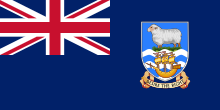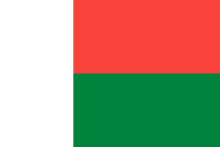
География (от древнегреческого γεωγραφία geōgraphía ; объединение gê 'Земля' и gráphō 'писать') - это изучение земель, особенностей, жителей и явлений Земли . География - это всеобъемлющая дисциплина, которая стремится понять Землю и ее человеческие и природные сложности - не только то, где находятся объекты, но и то, как они изменились и появились. Хотя география специфична для Земли, многие концепции могут быть применены более широко к другим небесным телам в области планетологии . Географию называют «мостом между естественными науками и социальными науками ».
Происхождение многих концепций в географии можно проследить до грека Эратосфена из Кирены, который, возможно, ввел термин «geographia» ( ок. 276 г. до н. э. – ок. 195/194 г. до н. э. ). Первое зарегистрированное использование слова γεωγραφία было в названии книги греческого ученого Клавдия Птолемея (100 – 170 г. н. э.). Эта работа создала так называемую «птолемеевскую традицию» географии, которая включала «птолемеевскую картографическую теорию». Однако концепции географии (такие как картография ) восходят к самым ранним попыткам понять мир пространственно, причем самый ранний пример попытки создания карты мира датируется IX в. до н. э. в Древнем Вавилоне . История географии как дисциплины охватывает культуры и тысячелетия, будучи независимо разработанной несколькими группами и перекрестно опыляемой торговлей между этими группами. Основными концепциями географии, едиными для всех подходов, являются сосредоточенность на пространстве, месте, времени и масштабе.
Сегодня география — чрезвычайно широкая дисциплина с множеством подходов и модальностей. Было предпринято множество попыток организовать дисциплину, включая четыре традиции географии, и по ветвям. Используемые методы, как правило, можно разбить на количественные и качественные подходы, при этом многие исследования используют смешанные методы . Распространенные методы включают картографию , дистанционное зондирование , интервью и геодезию . ( Полная статья... )






Африка является вторым по величине и вторым по численности населения континентом в мирепосле Азии . Около 30,3 млн км 2 (11,7 млн квадратных миль) включая прилегающие острова, она охватывает 20% площади суши Земли и 6% от ее общей площади поверхности. С почти 1,4 миллиарда человек по состоянию на 2021 год, она составляет около 18% от населения мира. Население Африки является самым молодым среди всех континентов; медианный возраст в 2012 году составлял 19,7 лет, когда медианный возраст в мире составлял 30,4 года. Согласно прогнозам на 2024 год, население Африки достигнет 3,8 миллиарда человек к 2099 году. Несмотря на широкий спектр природных ресурсов , Африка является наименее богатым континентом на душу населения и вторым наименее богатым по общему богатству, опережая Океанию . Ученые приписывают это различным факторам, включая географию , климат , коррупцию , колониализм , холодную войну и неоколониализм . Несмотря на эту низкую концентрацию богатства, недавний экономический рост и большое и молодое население делают Африку важным экономическим рынком в более широком глобальном контексте. Африка имеет большое количество природных ресурсов и продовольственных ресурсов, включая алмазы , сахар , соль , золото , железо , кобальт , уран , медь , бокситы , серебро , нефть , природный газ , какао-бобы и т. д. ( Полная статья... )
Альберт Генри Стэнли, 1-й барон Эшфилд , TD , PC (8 августа 1874 — 4 ноября 1948), урождённый Альберт Генри Кнаттрисс , был британо-американским бизнесменом, который был управляющим директором, затем председателем компании Underground Electric Railways Company of London (UERL) с 1910 по 1933 год и председателем Лондонского совета по пассажирскому транспорту (LPTB) с 1933 по 1947 год.
Хотя он родился в Британии, его ранняя карьера проходила в Соединенных Штатах, где в молодом возрасте он занимал руководящие должности в развивающихся трамвайных системах Детройта и Нью-Джерси. В 1898 году он служил в ВМС США во время короткой испано-американской войны . ( Полная статья... )




Более подробную информацию по этой теме можно найти в следующих родственных проектах Фонда Викимедиа :